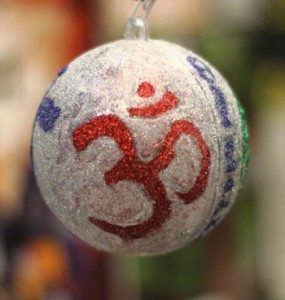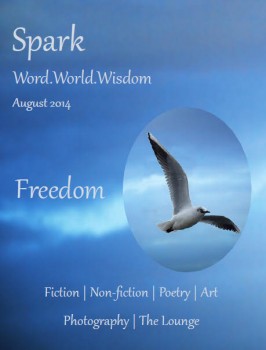by Sushanta Sarma Barooah
It was the mid-80s, and it was a particularly hot summer noon. Sitting under a tin roof pandal before the sacred fire of a homa, my father covered him and me under a dhoti to whisper into my ears the Gayatri mantra and adorned me with a sacred thread, a symbol of spiritual discipline. By then, I had a vague sense of what spirituality was and what religion was. It seemed to be mostly about doing good to others and praying for the well-being of, firstly my grandparents on both sides, then my parents and finally all other living beings. In my every journey as a child my head automatically bowed at the sight of any structure with a dome or a steeple, be it a temple, mosque, Gurudwara or a Church. I’d also overheard my grandfather explaining Brahma and Parambrahma, and the concept of the soul according to Hinduism, to an older cousin. My father of course said his prayers regularly. But deeply influenced by Dr. Radhakrishnan’s classic, “A Hindu View of Life”, he’d tell us tales from history rather than mythology, insisting that Hinduism was indeed a view of life and not a religion.
My introduction to formal religion started with the sacred thread ceremony. For a year, I sincerely performed the rituals wearing a dhoti after a bath in the morning and evening as I was told to do. There was also a nagging tension within me about the true significance of the rituals and as I grew up to be in the last year in school, I quietly abandoned them,sticking only to a silent prayer of the Gayatri Mantra for a momentary connection with my soul and the over-soul.
It was after graduating from school – exactIy two years from the ceremony –when I formed my decisive opinion about religion. I was travelling with my family to various places in south India beginning with Thiruananthapuram. Our first day started with the famous Padmanabhaswami Temple, where lord Vishnu is worshipped in his bed of eternal sleep. Overwhelmed by its golden masts and general opulence I was eager to enter the temple and offer my prayers, but the temple authorities did not allow my father and me to enter, as we were wearing T-shirts and trousers. We were asked to change into a dhoti and also asked to give up our vests and wallets. My mother was allowed instantly without her purse because she was wearing a saree. However, my younger sister, then in sixth grade, was wearing a frock and was not allowed to enter the temple. Not to leave her alone among strangers we went in to the temple one by one, albeit with a heavy heart.
We then went to Kanyakumari and saw the temple of the virgin goddess, and then on to the temple towns of Madurai and Rameswaram. In all these places, our whole family was allowed to enter without any question. What happened in the last leg of our journey, in Chennai, stays with me to this day. As part of an organised tour, we visited a temple where the legend was that two birds came for lunch from Varanasi every forenoon, but after climbing 545 rocky steps bare foot under the blazing sun of September we could not see the birds, we were too late for the darshan. We also went to other places like Kanchipuram and Mahabalipuram. A British couple from London were also travelling with us in our tourist bus. While the gentleman preferred to stay back in the bus at religious places, the lady would eagerly visit each one of them and try to understand everything the guide has to say. In the Kamakshi temple of Kanchipuram, all of us queued up to enter the temple, and the British lady was right in front of me in the queue. As we neared the entrance, a stout young priest, standing guard with a thick wooden club, pointed to a signboard reading “Non-Hindus are not allowed”. The British Lady only said “I consider myself a Hindu,” and she was allowed to enter the temple.
Within a span of hardly ten days I learnt about and understood the religion I was born to in its most conservative and most liberal forms, and how both could co-exist. It also dawned upon me why people from various cultures could feel at home in our great country throughout the ages.
Sushanta Sarma Barooah was born and brought up in Assam and is a practising law in the High Court at Guwahati. He finds literature a diversion from ratiocination in legal literature but only find time to read more about literature than literature itself. He also likes to travel and occasionally writes on social and environmental issues.
Pic by https://www.flickr.com/photos/nabeel_yoosuf/






